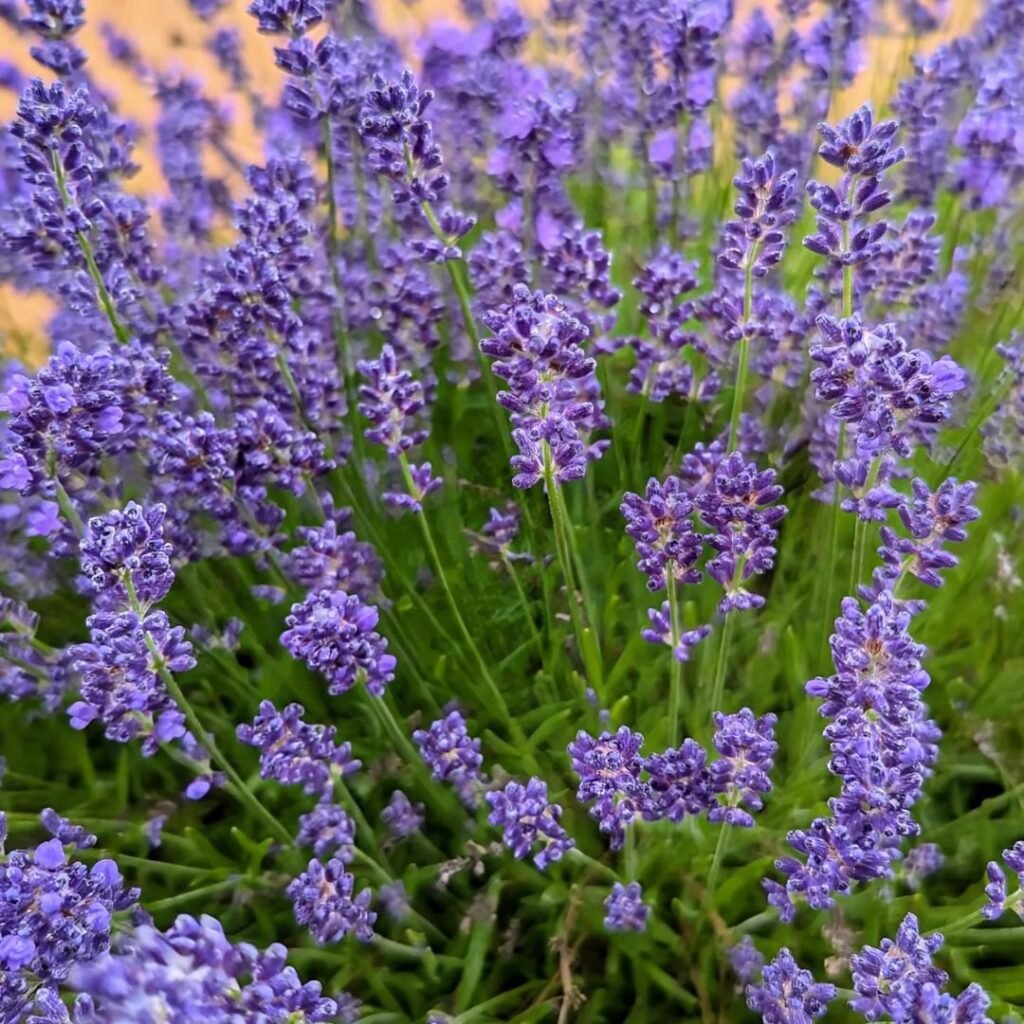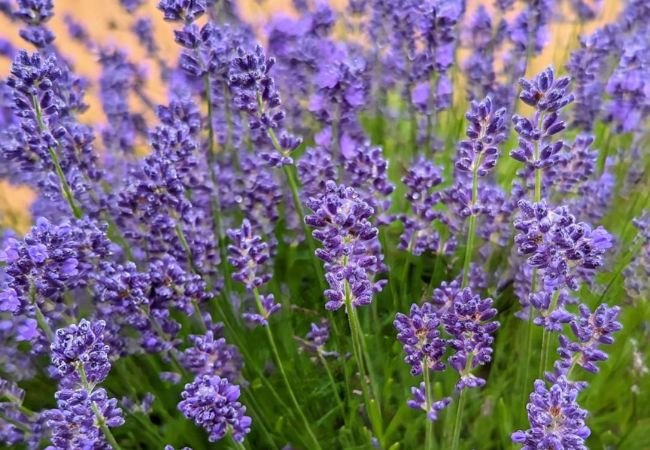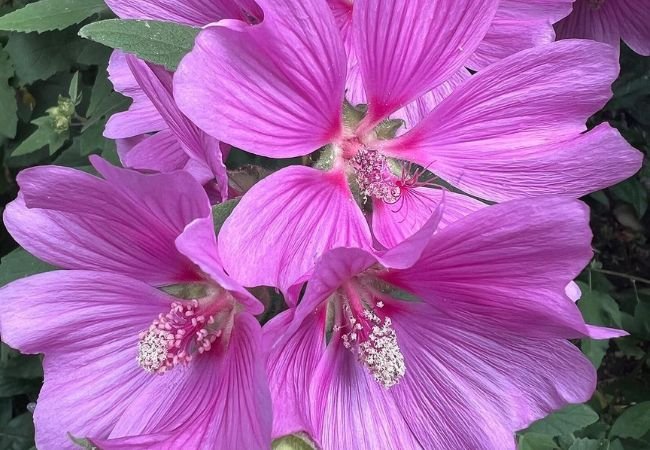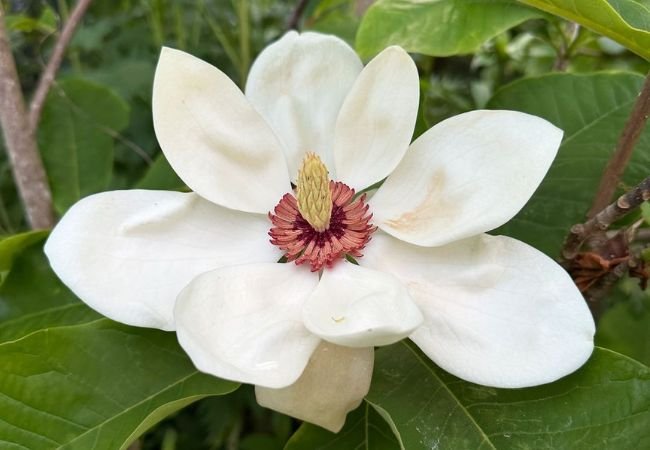Discover the beauty and benefits of Lavender Flowers. Learn how to grow, care for and use this aromatic herb in your garden, home and daily life.
Have you ever walked past a garden and been stopped in your tracks by a sweet, calming scent? Chances are, you’ve encountered lavender. This beloved purple flower is more than just a pretty face in the garden. Let’s explore why lavender has become a favorite among gardeners and herb enthusiasts across the USA.
Here’s a detailed chart for Lavender flowers:
| Category | Information |
|---|---|
| Botanical name | Lavandula spp. |
| Common name | Lavender |
| Plant type | Perennial herb |
| Hardiness zone | Zones 5-9 |
| Sun exposure | Full sun |
| Soil type | Well-drained, sandy or loamy soil |
| Watering | Low watering, drought tolerant |
| Growth habit | Upright, bushy |
| Height/Spread | 1-3 feet tall, 1-2 feet wide |
| Special features | Fragrant purple or blue flowers, aromatic foliage, attracts pollinators, used in aromatherapy and culinary applications |
What is Lavender?

Lavender is a flowering plant in the mint family. Native to the Mediterranean region, lavender has been cultivated worldwide for its fragrant flowers and oils.
Key Features
- Spikes of small, purple flowers (though some varieties come in pink or white)
- Gray-green, aromatic foliage
- Woody stems
- Blooms typically in summer
Why Gardeners Love Lavender
- Drought Tolerant Once established, lavender is very water-wise, making it great for areas with water restrictions.
- Attracts Pollinators Lavender is a favorite of bees and butterflies, supporting local ecosystems.
- Versatile Uses From culinary to medicinal to decorative, lavender has many applications.
- Low Maintenance Lavender requires minimal care once established.
How to Grow Lavender
Planting:
- Choose a spot with full sun and well-draining soil
- Plant in spring after the last frost
- Space plants 1-3 feet apart, depending on the variety
- Water sparingly until established
Care Tips:
- Water deeply but infrequently
- Prune in early spring to maintain shape
- Avoid over-fertilizing; lavender prefers poor soil
For more detailed growing instructions, check out this guide from the Clemson Cooperative Extension.
Uses for Lavender
Garden Design Lavender works well in various garden styles:
- Herb gardens
- Rock gardens
- Border plantings
- Container gardens
- Culinary Uses Lavender can be used in cooking and baking, adding a unique flavor to dishes.
- Aromatherapy Lavender essential oil is widely used for its calming properties.
- Natural Pest Repellent The strong scent of lavender can help repel moths, fleas and mosquitoes.
Interesting Facts About Lavender
- Ancient History Lavender has been used for thousands of years, dating back to ancient Egypt.
- Name Origin The name “lavender” comes from the Latin word “lavare,” meaning “to wash.”
- Medicinal Properties Lavender has been studied for its potential health benefits, including stress relief and improved sleep.
Varieties of Lavender
There are many types of lavender, but the most common in the USA are:
- English Lavender (Lavandula angustifolia) Hardy and fragrant, ideal for cooler climates.
- French Lavender (Lavandula dentata) Less cold-hardy but blooms for a long time.
- Spanish Lavender (Lavandula stoechas) Distinctive flowers with “bunny ear” petals on top.
For more information on lavender varieties, visit the United States Lavender Growers Association.
Potential Challenges
While lavender is generally easy to grow, be aware of these potential issues:
- Overwatering Lavender is prone to root rot in soggy soil. Ensure good drainage.
- Humidity In humid areas, lavender may struggle. Provide good air circulation.
- Winter Protection In colder regions, lavender may need protection from harsh winter weather.
Lavender is a versatile, fragrant and beautiful plant that can enhance any garden or home. Its low-maintenance nature and multiple uses make it a valuable addition to landscapes across the USA. Whether you’re growing it for its beauty, scent, or practical applications, lavender is sure to delight.
Remember, successful gardening is about choosing plants that suit your local climate and personal needs. With its adaptability and wide range of uses, lavender is an excellent choice for both novice and experienced gardeners alike.
As you plan your garden, consider adding lavender for its beauty, fragrance and benefits to pollinators. With proper care, you’ll be enjoying the calming presence of lavender for years to come.
For more gardening tips and plant care guides, visit usagardenhub.com.







3 Comments on “Lavender : The Fragrant, Versatile & Easy to Grow Favorite”